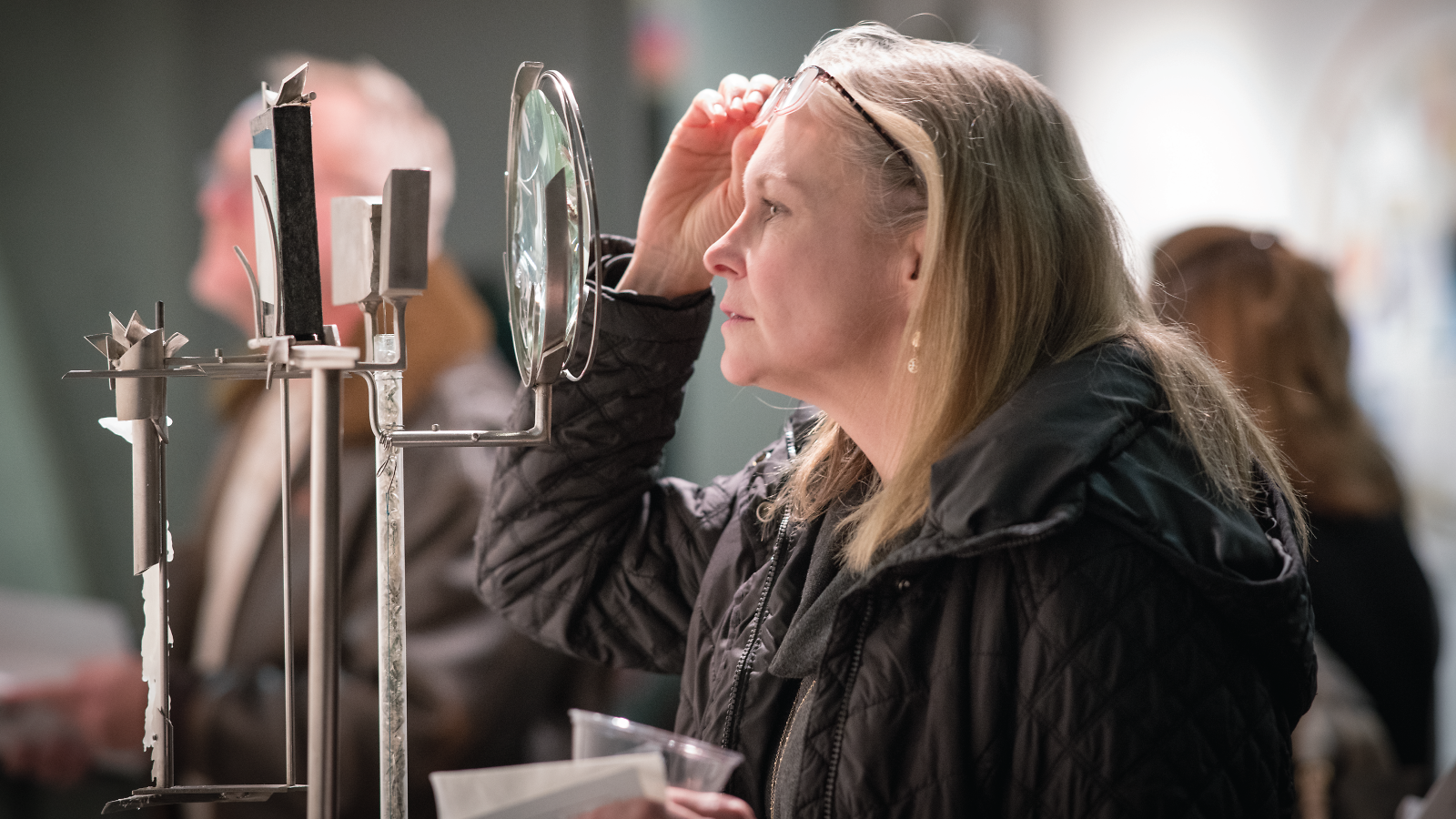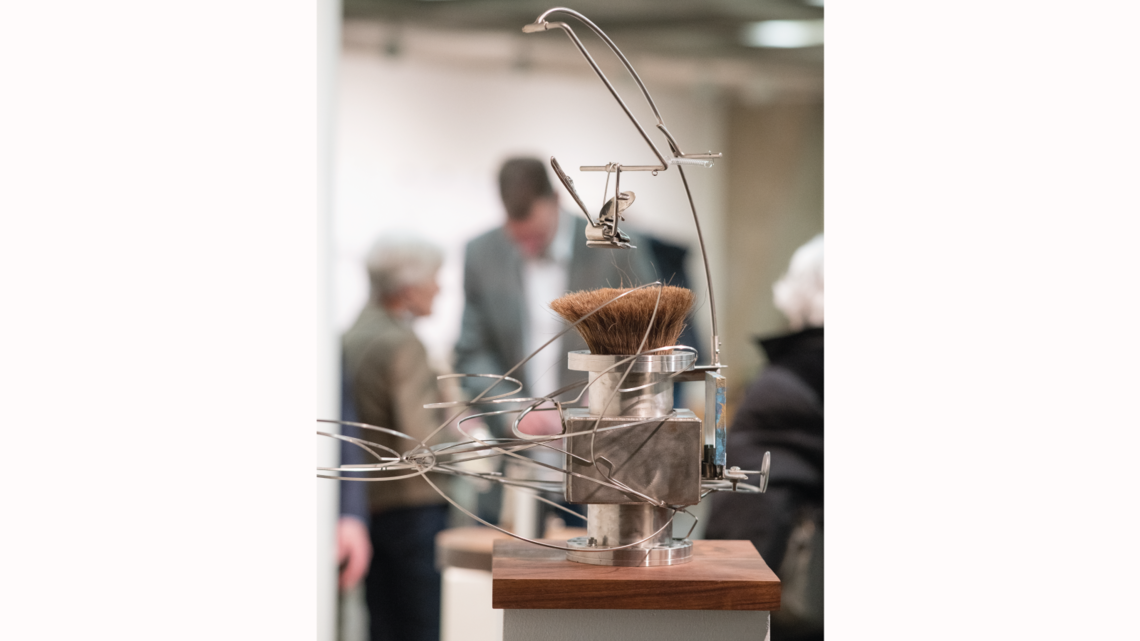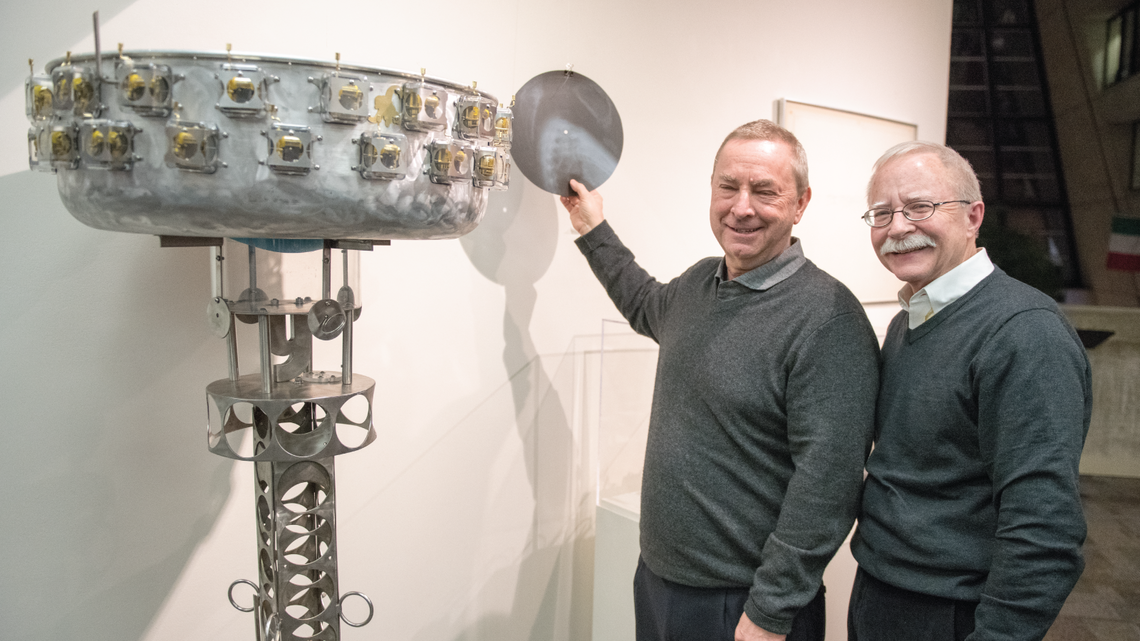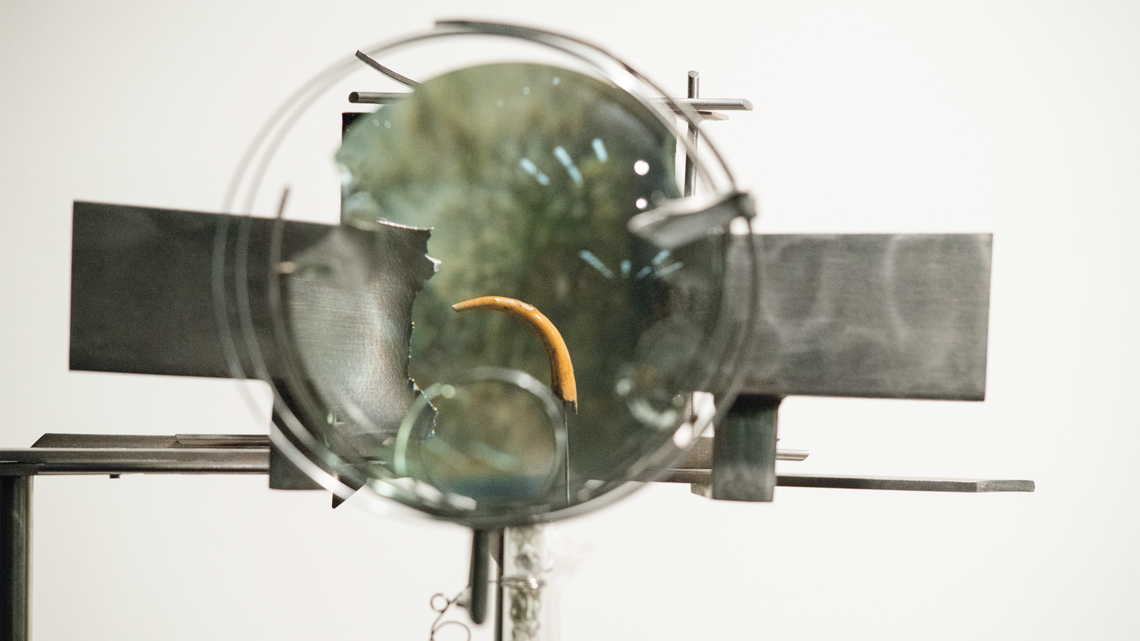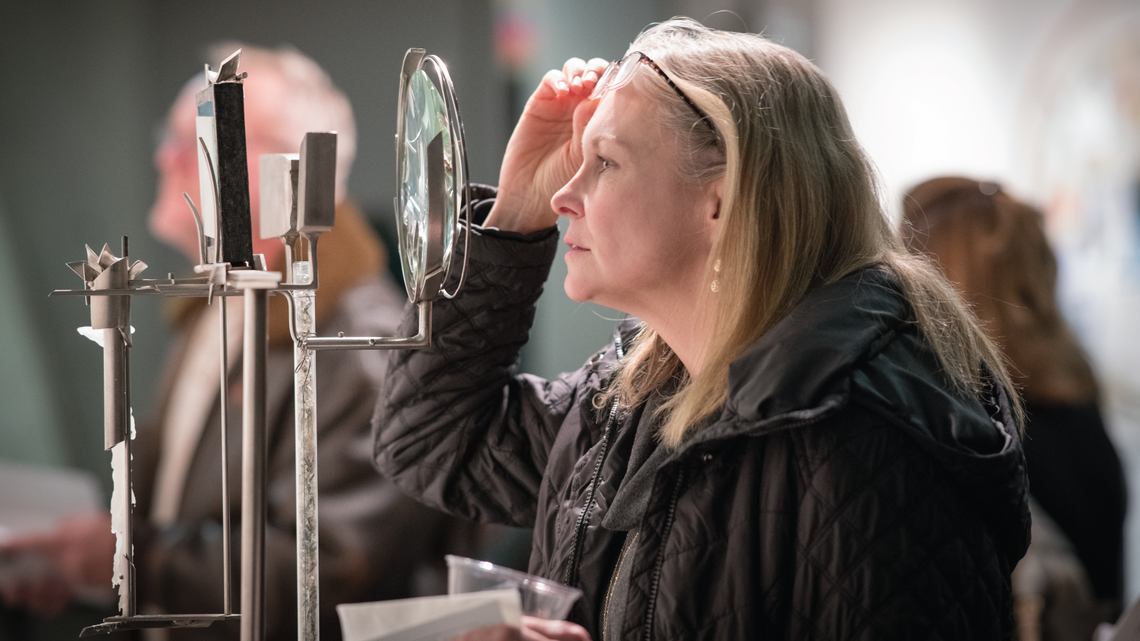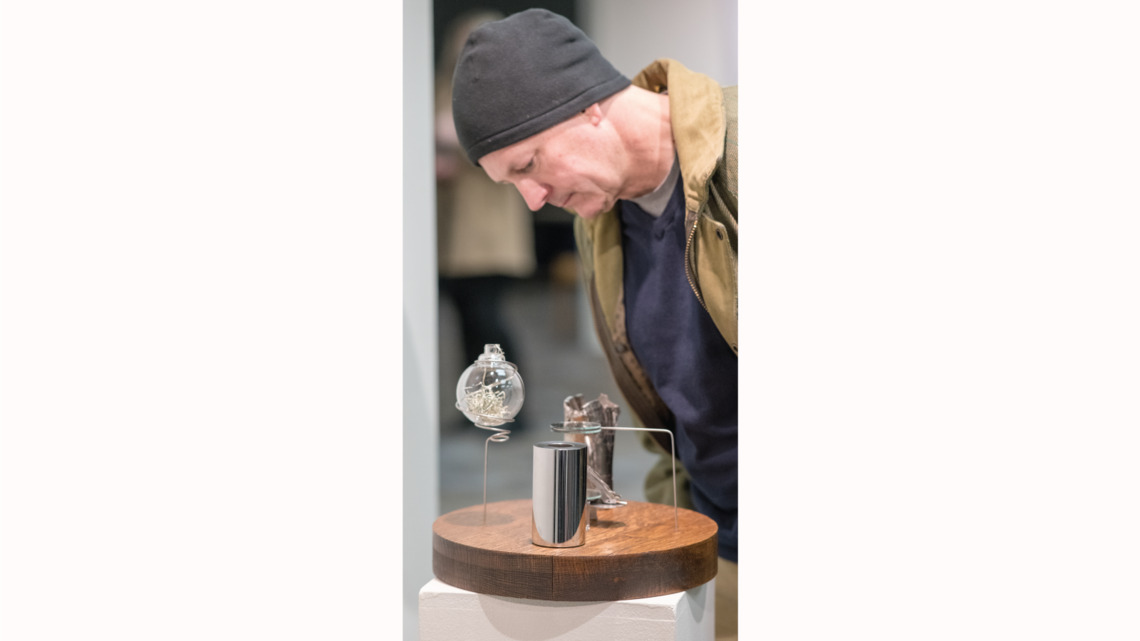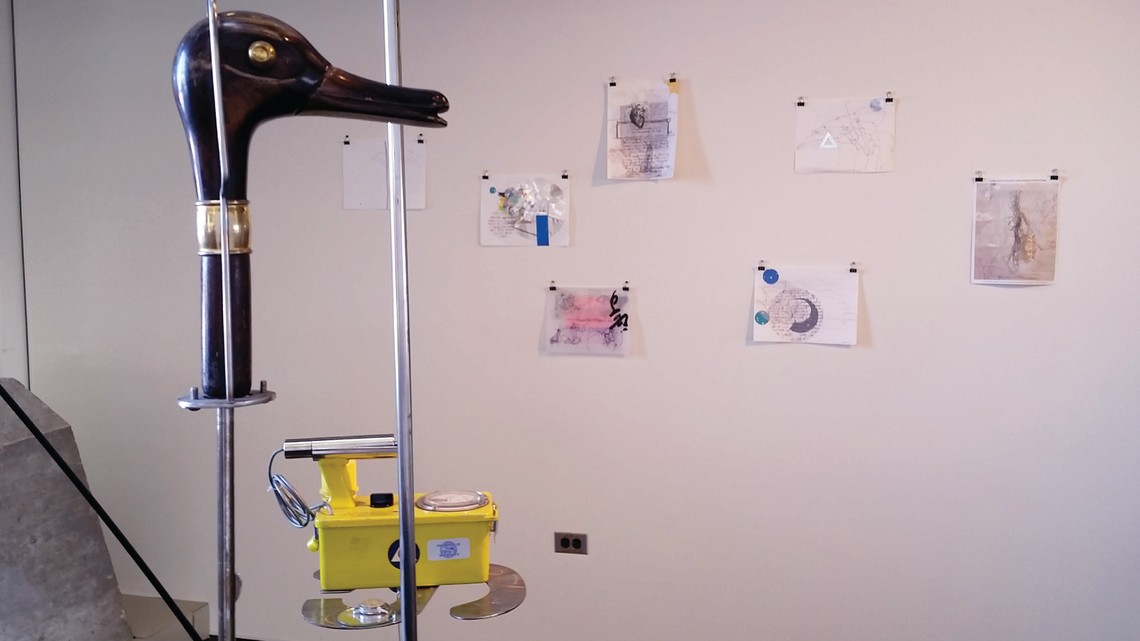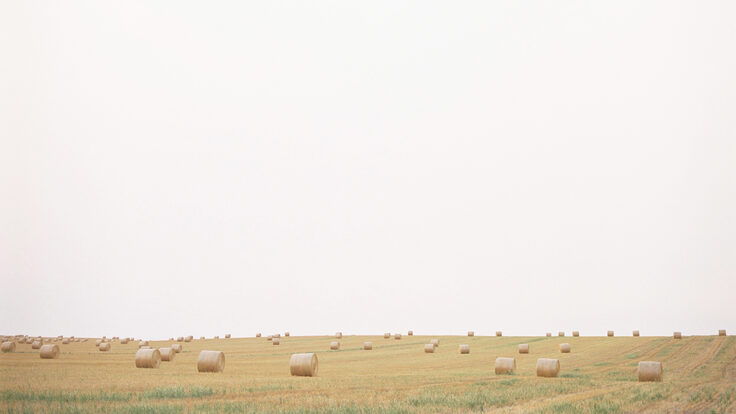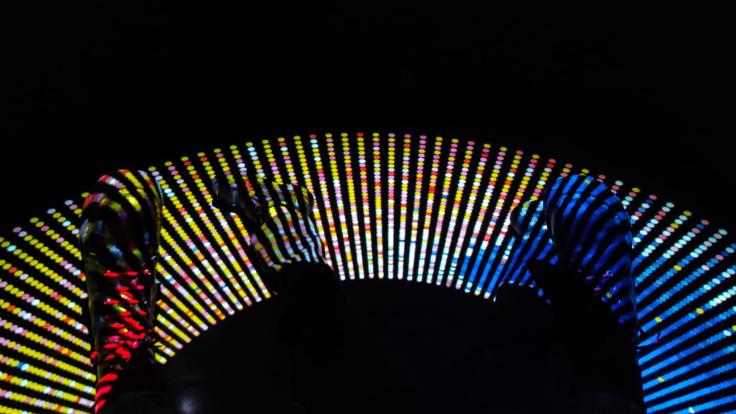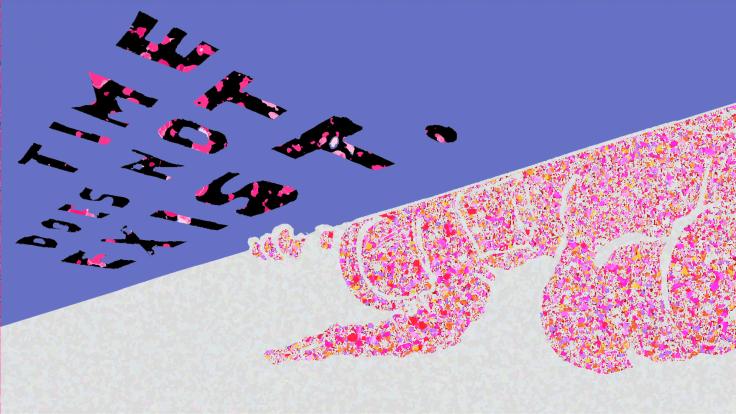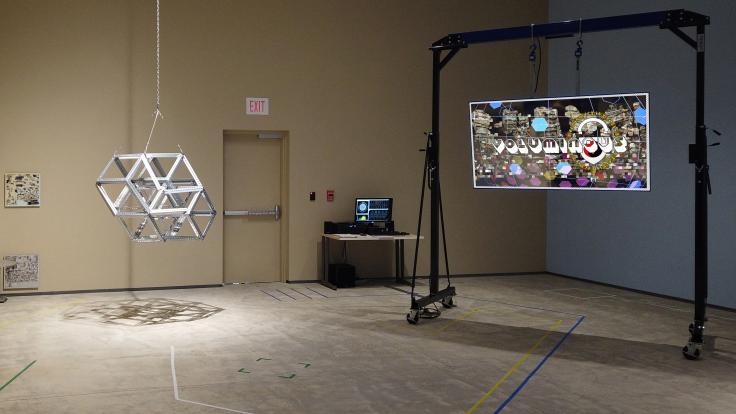When founding director Robert R. Wilson first imagined Fermilab in the 1960s, he not only envisioned a lab that was at the forefront of physics, but a space that would inspire visitors and elicit an appreciation of the research. From the beginning, he recognized the importance of fusing art and science.
Today Fermilab continues this legacy through its Artist-in-Residence Program. The 2017 artist-in-residence, Jim Jenkins, has created sculpture and mixed media meant to capture the magic of complex experimental equipment and intangible particles.
To create the pieces for his Fermilab Art Gallery show, A Perplexity of Conundrums, he pulled mechanical parts right out of particle detectors and accelerators, incorporating them into intricate works of art. Their careful assembly reflects the same attention to detail required to make the technology involved in particle physics research.
“The Tevatron [Fermilab’s retired particle collider] has 500,000 parts, and they all had to work perfectly, in unison, to be able to do what it did. That is a staggering number,” Jenkins says.
Jenkins uses leftover materials or pieces from out-of-date equipment, giving them new life. These include a piece of copper buss (a bar used to ground or conduct electricity) from the Tevatron, a mirror once used for measuring the energy of particles, detector film and wire, and other odds and ends.
He carefully arranges these relics of experiments past amongst other curiosities, including a Canadian beaver pelt, bass strings, X-ray images, owl talons, a duck-handled umbrella, and even a copy of a page from Enrico Fermi’s calculations.
Each piece is multifaceted with several, often contradictory, possible interpretations.
“Watching other people view this exhibit has been such a pleasure, because I’ve never seen people take so much time with art before,” says Georgia Schwender, the curator of Fermilab’s gallery.
Jenkins, who also exhibited at Fermilab in 2005, says he has become less inhibited in his art over time. In his 2017 show, he boldly symbolizes the danger of unsustainable human activity. He evokes mortality with bones and X-rays. He represents the fragility of the Earth with melting pyramids of ice and damaged mechanical parts.
Many of his sculptures demonstrate the laws of physics in motion. They rhythmically drip water, sustain living fish, rotate through magnetic attraction, or use a Geiger counter to measure particle decay. Their energy embodies scientific research at Fermilab: an active endeavor.
In his piece Ring Around the Ring, Jenkins assembled a unique snowflake-detector system using wires from the Tevatron, a sensitive microphone, and a recorder, along with X-ray film on which to record the sounds of the ephemeral crystals. The sound of a snowflake landing on a wire is as subtle as the miniature burst of light a neutrino creates in a neutrino detector, Jenkins says. He hopes this parallel will help his audience grasp the nature of the ghostlike particle.
As Schwender says, “His art opens a door for people that don’t usually think about physics. Not everybody can sit down and look at a textbook and find joy or curiosity, and this is an alternative approach.”
For Jenkins, the research at Fermilab has always been part of his vision for his art. “In 1992 I made a bucket list of things I wanted to do and number 13 was, ‘I want to work at Fermilab and make art there.’”
A Perplexity of Conundrums opened January 8 and will run in the Fermilab Art Gallery until March 6. It is open to the public from 8 a.m. until 4:30 p.m. Monday through Friday. Jenkins will also be giving a Gallery Talk that is open to the public on Feb. 26 at noon in the Fermilab Art Gallery.



